Have you ever wondered why some products take off immediately while others struggle to gain traction? The answer often lies in a well-crafted go-to-market strategy.
These days, having a great product isn’t enough – you need a solid plan to successfully and effectively bring it to your target audience. In the go-to-market space, it’s crucial to seek out ways to refine your approach and stay ahead of the curve, but luckily, that’s where we come in!
In this article, we’ll explore what makes a go-to-market strategy effective and analyze eight brands that have excelled in their approach, offering valuable insights that you can apply directly to your own strategies. Plus, you can download our handy go-to-market strategy template to give you that extra head-start!
So whether you’re launching a new product, trying to break into a new market, or just looking for some new inspiration, these go-to-market strategy examples will provide you with all the practical, actionable ideas you need.
Let’s get started!
What is a go-to-market strategy?
First, let’s go over some of the basics. A go-to-market (GTM) strategy is a comprehensive plan that outlines how a company will introduce a new product or service to its target market and generate demand. It's essentially a roadmap that guides businesses through launching and scaling a new offering.
At its core it’s all about understanding your target audience, positioning your product as a solution to market problems, streamlining marketing and sales strategies, and aligning cross-functionally to create a unified approach.
Unlike wider business or marketing strategies, a GTM strategy is often more tactical and focused on specific goals within a much shorter timeframe, using product-market fit and competitive positioning to optimize and secure a successful launch.

What makes a good go-to-market strategy?
A successful go-to-market strategy is built on several key principles:
- Deep market understanding
It's crucial to thoroughly research your target audience, their pain points, and preferences. This knowledge forms the foundation of your entire strategy.
- Clear value proposition
Articulate how your product or service solves customer problems better than existing solutions. Your value proposition should be concise, compelling, and differentiated from competitors.
- Well-defined target audience
Identify and segment your ideal customers. The more specific you can be, the better you can tailor your messaging and approach.
- Multi-channel approach
Use a mix of marketing channels that align with your target audience's behaviors and preferences. This might include social media, content marketing, email campaigns, and paid advertising.
- Measurable objectives
Set clear, specific, and time-bound goals for your GTM strategy. These objectives should be easy to track and aligned with overall business goals.
- Cross-functional alignment
Ensure all relevant departments (product, marketing, sales, customer support) are working together cohesively towards the same objectives.
- Flexibility and adaptability
Be prepared to adjust your strategy based on real-time data and feedback. Evolve as you learn more about your market and customers, prioritize solving their problems, and delivering value.
By incorporating these elements, you'll be better positioned to successfully introduce your product to the market, drive adoption, and actually achieve your business goals.
Remember, a good GTM strategy is not a one-size-fits-all approach. It should be tailored to your specific product, market conditions, goals, and should be reviewed regularly to keep it optimized.
So, let’s dive into some of the brands that are doing this right!

Example 1: Lick Paint
Lick is a home décor brand that's made quite a splash (sorry!) in the paint and wallpaper market. Their ecommerce go-to-market strategy is all about empowering customers through education and inspiration, positioning themselves as providers of both expertise and lifestyles, not simply paint or color.
Why their go-to-market strategy works:
Customer support: Lick employs color specialists to offer support on-site or via video call, as well as a free online color consultancy quiz. This personalized, tailored approach helps customers feel confident in their decisions, reducing the barrier to purchase.
Educational content: They create educational content on social media and throughout the user journey on their website with ‘How to’ and ‘Ask the Experts’ guides. This not only helps customers but also positions Lick as an authority in home décor.
Community focus: Lick's social channels celebrate customer transformations, creating a sense of community and inspiring future decorators. This user-generated content (UGC) strategy is a powerful way to build trust and showcase real-world applications of their products.

Also by often choosing to work with influencers whose content is focused on decoration and home renovation, they’re building up that extra trust and simultaneously expanding into a whole new audience of potential decorators and customers.

Targeted content: Lick has curated content around their target audience – aspirational, creative millennials looking for home décor inspiration. Their website features home tours with influencers and inspiration-themed content categorized by décor style.
They even go further, harnessing relevant trending topics that they know are attention-grabbing for their specific audience, like in this Bridgerton x Lick guide.
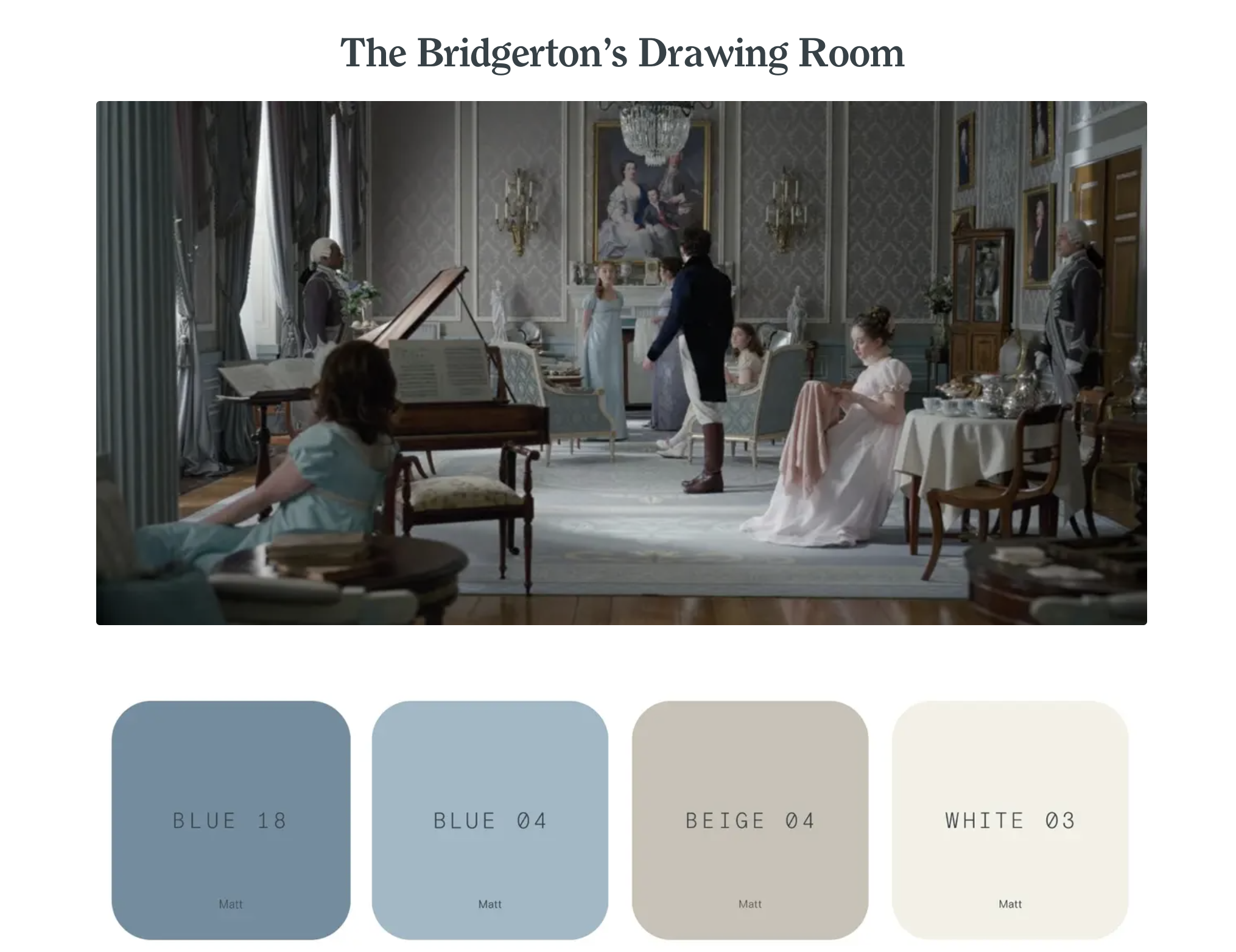
Sustainability: By building sustainability into their core mission –for instance, they use 100% recyclable packaging and work with various national and global charities – Lick appeals to environmentally conscious consumers. This cleverly also correlates with their target audience, further boosting customer loyalty and advocacy.
Collaborations: Lick's collaboration with M·A·C for their 40th anniversary on the shade ‘Black 40’ in both paint and lipstick, shows how they leverage partnerships to create unique, bold, limited-edition products that generate buzz, going above and beyond competition.
Lick's strategy works because it addresses the most common pain points in home decoration – uncertainty and lack of confidence. By providing education and support, they're not just selling paint, they're selling the confidence to transform your space and express yourself.

Example 2: Canva
Canva, the graphic design platform, has crafted a go-to-market strategy that's as creative as the tools it offers. Their approach focuses on empowering users and making design accessible to everyone.
Why their go-to-market strategy works:
User-centric campaign: Canva's "Love Your Work" campaign features actual Canva users, showcasing how the platform helps them achieve their professional goals. This approach not only highlights the product's capabilities but also creates relatable content for potential users.

Addressing its target audience’s problems: By tapping into the issue of low workplace engagement (only 33% of US workers feel engaged with their work), Canva positions itself as a solution to make work more enjoyable and fulfilling, providing reasons to believe in their product.
Continuous innovation: Canva regularly introduces new features and redesigns its user experience to meet evolving user needs. They even hosted a "Canva Create 2024: Work Redesigned" event to showcase this redesigned experience and new tools, generating additional excitement and buzz.

Multi-channel marketing: Canva uses various channels for its marketing efforts, including social media teasers, email campaigns, and blog posts. This multi-pronged approach ensures wide reach and engagement.
Freemium model: By adopting a freemium model, which allows users to try the platform before committing to a paid plan, Canva reinforces its message and value of making design accessible for all.
Canva's strategy works by addressing a clear market gap – the need for easy-to-use design tools for non-professionals. By continually innovating and showcasing real user success stories, they maintain their position as a go-to solution for everyday design needs.

Example 3: Modibodi
Modibodi, a brand specializing in leak-proof period underwear and swimwear, has crafted a bold and attention-grabbing go-to-market strategy that challenges societal taboos and empowers.
Why their go-to-market strategy works:
Myth-busting campaigns: Modibodi's ingenious campaign featuring a freediver swimming with tiger sharks while on her period directly addresses and debunks common myths about menstruation. This bold approach generates conversation and breaks down barriers.
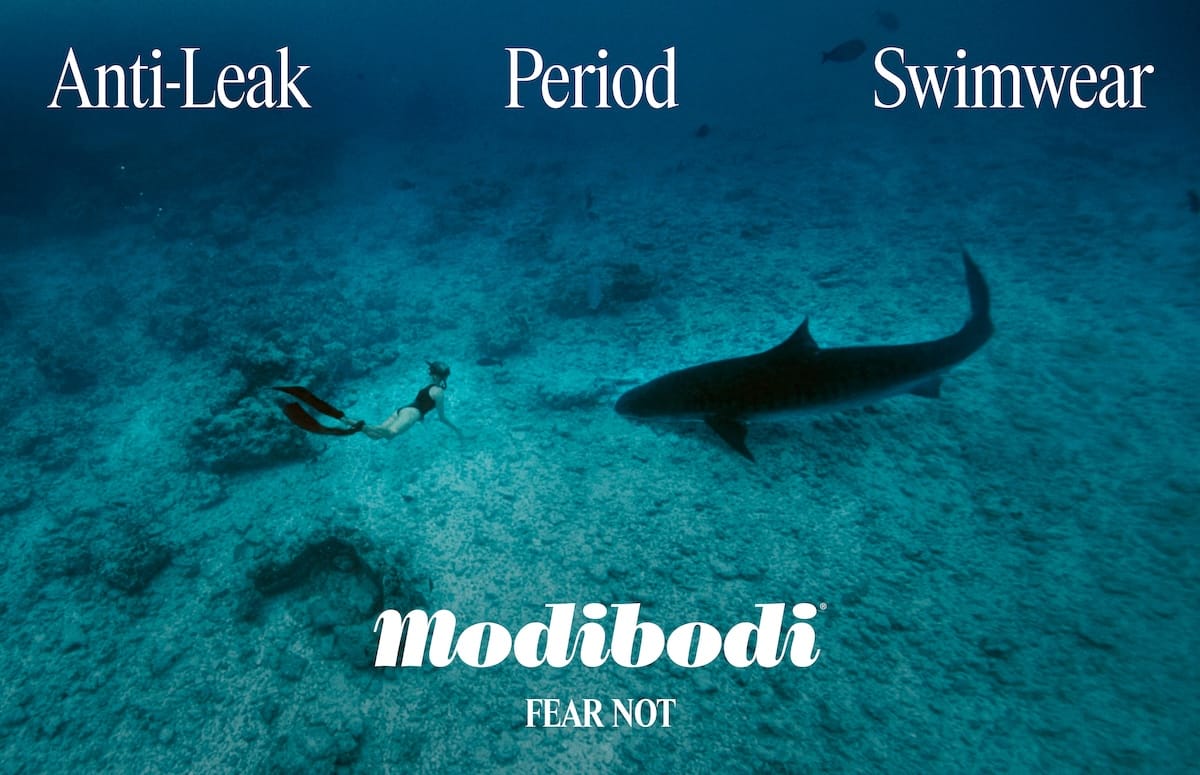
Addressing real concerns: The campaign was launched after a survey revealed that nearly 1.5 million menstruators believe they can't swim on their period. By addressing this misconception quite literally head-on, Modibodi positions itself as a solution to a real problem.
The brand uses survey data regularly to highlight the need for its products and to drive its marketing messages. This approach lends credibility to their claims and helps potential customers relate to the issues they're addressing.
Empowering and educating: The campaign replaces fears and myths surrounding menstruation with an empowering message, encouraging people to engage in their everyday activities regardless of their menstrual cycle. By making ‘Rewriting the rules of our periods ruling us’ their key slogan, they center empowerment at the core of their brand.
They also effectively harness social media to further this goal of empowerment and education, with a wealth of resources physically demonstrating how their products work.

Their use of social media also proves how laser-focused they are on their target audience – adults and younger people looking for an easier, more accessible, and sustainable solution to periods. Using clear bright infographics, informative videos, and stylish photoshoots, they work to both remove shame and secure their audience’s trust and engagement.
Timing and relevance: Launching the campaign during 'Shark Week' was a clever move, leveraging a popular cultural event and outdated period euphemism to maximize visibility and impact. They know their audience well and heavily use memes and trending relevant humor to appeal to this audience.
Powerful collaborations: By working with a marine biologist and freediver, Brinkley Davis, Modibodi adds credibility to their campaign and reaches a potentially new wider audience interested in marine life and extreme sports.
Modibodi's partnership with PUMA to create period activewear also addresses the issue of girls leaving sports due to period-related concerns. This initiative opens up conversations and reinforces Modibodi’s position as a brand that supports and empowers.
Modibodi's strategy works because it boldly addresses taboo subjects, creating conversation and awareness around menstruation. By positioning their products as solutions to real problems faced by menstruators in various aspects of life - from swimming to sports - they appeal to a broad audience seeking practical, empowering solutions. Their partnerships and data-driven approach further strengthen their message and market position.

Example 4: TALA
TALA, an activewear brand, has developed a highly successful go-to-market strategy that focuses on sustainability, accessibility, and community engagement.
Why their go-to-market strategy works:
A clear mission: TALA's mission to make consciously-made active and off-duty styles accessible and inclusive without sacrificing performance or fit resonates with environmentally and fashion-conscious consumers.
Problem-solution approach: The brand addresses a clear market gap – the lack of environmentally and socially conscious stylish activewear at competitive prices. This positioning appeals to consumers who want to make more sustainable choices without compromising on quality or budget. It also stays inclusive with its sizes, ranging from a 2XS to a 4XL.
Founder-led brand: TALA leverages the influence of its founder, Grace Beverley, who is actively involved in brand promotion and customer engagement. This personal touch adds authenticity to the brand.
Experiential marketing: The brand's pop-up events, like the one in Soho during New York Fashion Week, allow customers to experience the brand in person. Offering free coffee and discounts creates a positive association with the brand.
The New York pop-up event was also part of TALA's strategy to expand into the US market, showing how the brand thoughtfully approaches new market entry.

Community focus: TALA emphasizes listening to their community and developing products based on customer needs and wants, from sizing and materials to items and colors. This customer-centric approach helps build brand loyalty.
Social media engagement: The brand uses platforms like TikTok to share behind-the-scenes content, making the brand feel more relatable and transparent to its largely young, female audience. It then harnesses the aesthetic-focused nature of Instagram to use this platform for stylish, fashion and lifestyle-focused content, to further attract and engage this audience.

TALA's strategy works because it aligns with growing consumer demand for sustainable, ethical products without compromising on style or performance.
By creating experiences, engaging with their community, and maintaining transparency, TALA builds trust and loyalty among its target audience and furthers brand integrity.
Example 5: Slack
Slack, the popular workplace communication platform, has implemented a go-to-market strategy that focuses on user experience, continuous innovation, and a strong value proposition.
Why their go-to-market strategy works:
Freemium model: Unlike competitors that offer limited free trials, Slack provides a genuinely free version with the option to upgrade for more features. This approach allows users to experience the product's value before committing financially.
Continuous improvement: Slack maintains a commitment to innovation, keeping its product relevant and competitive through constant iteration and improvement. They also do this by regularly adding new features to enhance effectiveness, such as Slack AI, to combat information silos and decision-making difficulties.
By doing this Slack not only positions itself at the forefront of workplace technology trends but proves its dedication to innovation.
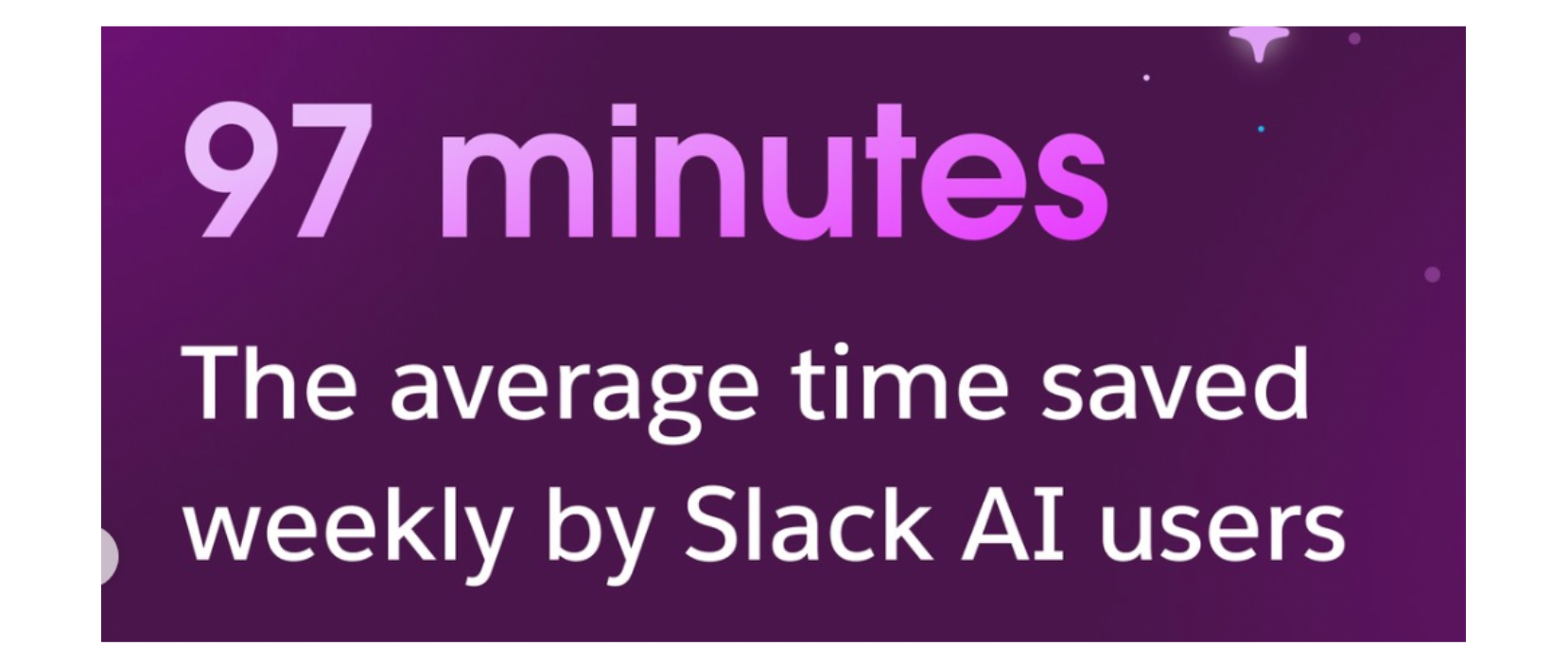
Customer-centric approach: Slack prioritizes customer feedback, by actively listening to users and adjusting the product accordingly. This approach builds trust and ensures the platform meets real user needs.
Slack's dedicated 'Customer Stories' page showcases how major clients use the platform, providing social proof and demonstrating the product's versatility across different business needs.
Multi-channel social media strategy: Slack also tailors its content to different social media platforms, showing a niche understanding of each platforms aim and audience:
- LinkedIn: Sharing product updates and recent events, aligning with the platform's professional nature.
- Instagram: Posting educational and fun content, with a focus on reels.
- YouTube: Providing informative content like step-by-step guides, customer stories, and security features.
Problem-solution marketing: Slack's marketing often highlights how the platform solves common workplace problems. For example, their hilarious ‘Big Meeting’ campaign – showing how Slack huddles can replace pre-meeting meetings – demonstrates the product's efficiency benefits.
Slack's marketing also often cites research on workplace inefficiencies and issues relevant to its target audience to highlight the need for its solution.

Slack's strategy works because it combines a strong, user-friendly product with effective marketing that highlights real workplace problems and solutions. By showcasing customer success stories, providing a freemium model, and continuously improving based on user feedback, Slack has built a loyal user base.
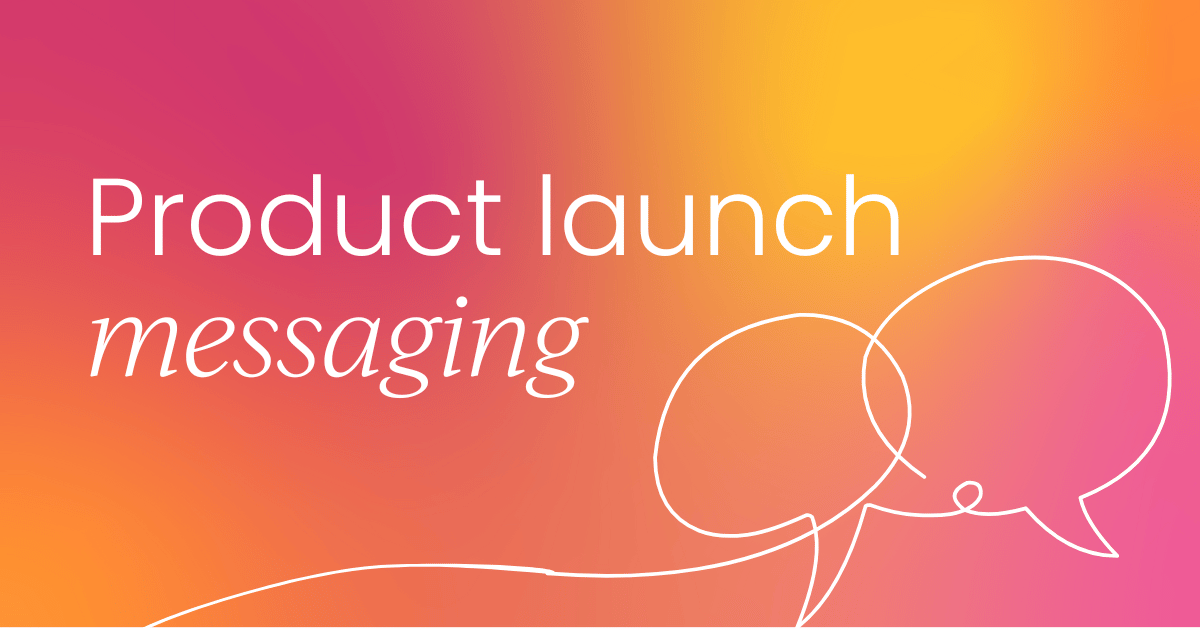
Example 6: REFY
REFY, a popular beauty brand, has crafted a winning go-to-market strategy that focuses on simplicity, quality, and community engagement.
Why their go-to-market strategy works:
Community-driven product development: The brand actively listens to their community and develops products based on their needs and wants. This approach ensures that their products resonate with their target audience, building loyal customers and advocates.
In developing products that solve specific problems for their customers, REFY creates a clear value proposition.
Brand values: REFY emphasizes creating vegan, cruelty-free products suitable for all skin types and tones. This aligns with growing consumer demand for ethical and inclusive beauty products. By focusing on creating essential, multifunctional products, REFY appeals to consumers looking for an efficient, streamlined beauty routine.
Their focus on simplicity also feeds into their marketing, where they’ve been able to enmesh their brand values by selling a lifestyle of elegance and affordable luxury.
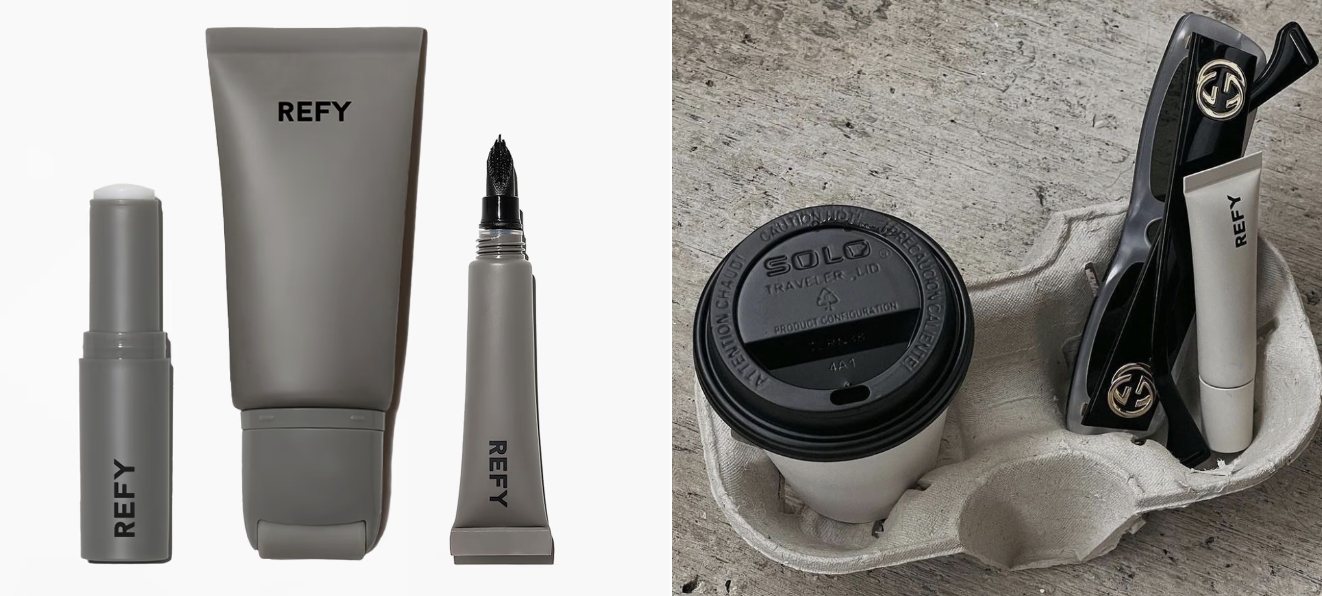
Multi-channel social media strategy: REFY maintains a strong presence across multiple social media platforms, tailoring their content to each platform's unique characteristics:
- Instagram: Their primary platform with over 815,000 followers, features a minimalist stylized aesthetic that aligns with their brand identity.
- TikTok: Used for behind-the-scenes content and trend participation, more heavily involving the brand’s founders, appealing to a younger audience.
Influencer collaboration: REFY leverages its co-founder, Jess Hunt's influence and works with micro, mid, and macro influencers to share user-generated content across social media platforms. This both increases their discoverability by tapping into each’s audience but also provides trusted reviews, one of the reasons many of their products have gone viral.
Also in working with such a wide range of influencers, REFY shows they understand their audience’s desire to see how the products look on all skin types and colors.
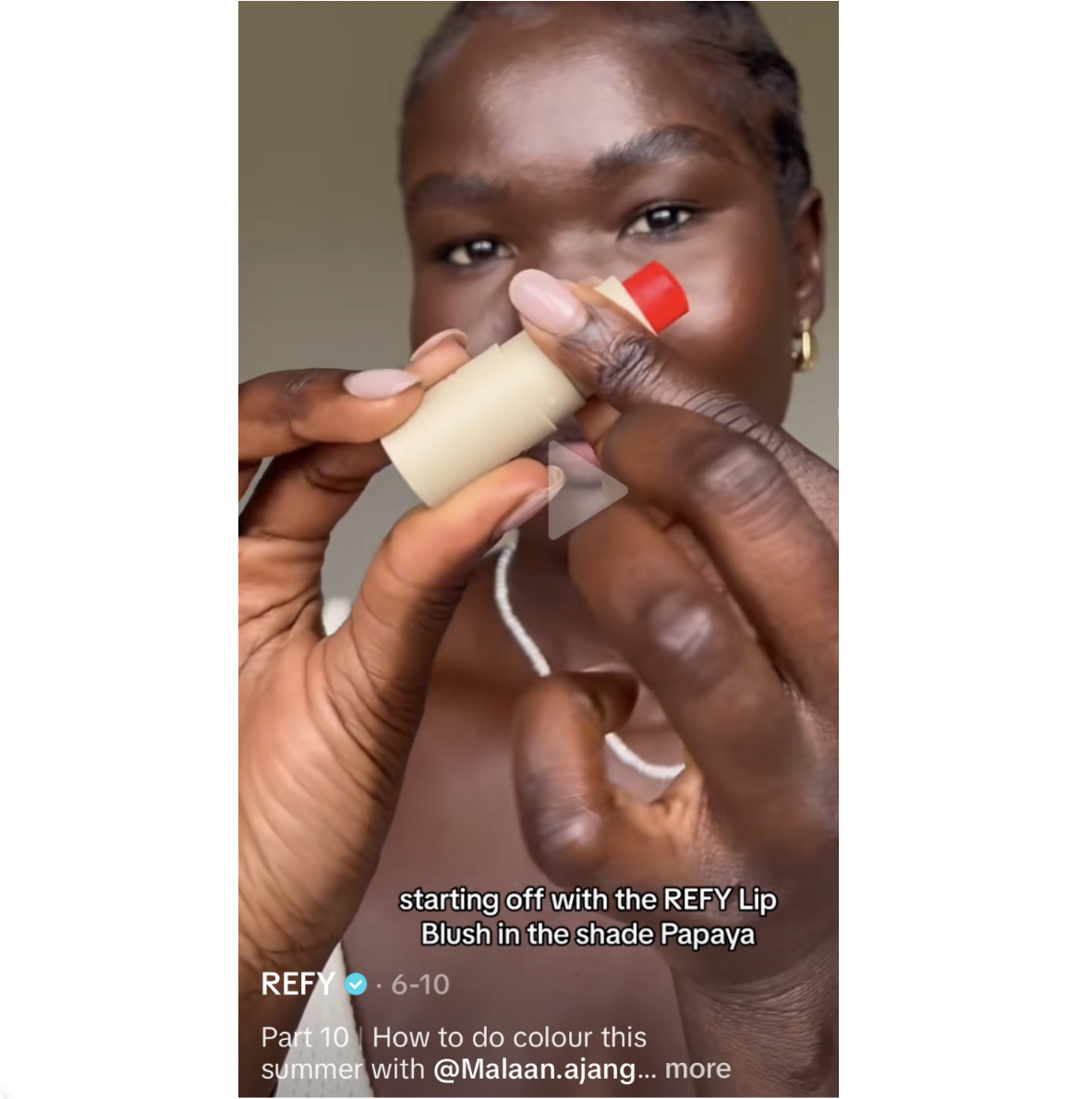
Experiential marketing: The brand has expanded into lifestyle experiences with pop-up events like 'REFY The Studio', 'The Exhibition', and the upcoming ‘REFY Café’ in Paris, allowing customers to engage with the brand in person and experience the REFY lifestyle, building relationships and giving back.
REFY's strategy works because it combines a clear brand identity with strong community engagement and multi-channel marketing. By focusing on solving real problems for their customers and creating products that align with consumer values, REFY has built a loyal following.

Example 7: Baggu
Baggu, a reusable bag brand, has implemented a top-notch go-to-market strategy that combines sustainability with style, making eco-friendly choices more appealing to consumers.
Why their go-to-market strategy works:
A clear mission: Baggu was created to eliminate unnecessary waste through responsible management of deadstock products and fabric. This clear environmental mission appeals to eco-conscious consumers looking to reduce their use of plastic bags.
Functional and stylish: While the core product is simple, Baggu elevates it by turning their bags into stylish statement pieces. This approach broadens their appeal beyond just environmentally conscious consumers to include fashion-forward customers. As awareness of environmental issues grows, particularly around plastic waste, Baggu positions itself as a stylish solution to a pressing problem.
Collaborations: Baggu partners with artists, designers, and iconic names to create unique, limited-edition collections that continually sell out. Their recent collaboration with Peanuts, for example, has been generating major buzz and attracting new customer segments.

Visual marketing: Baggu's products are visually interesting and eye-catching, making them perfect for promotion on visual-centric platforms like Instagram and TikTok, engaging customers to build their own Baggu collections.
Versatility: Baggu's products are known for their versatility, which forms a major part of their marketing and social media strategy. Their bags can be used for shopping, as fashion accessories, for travel, and more, increasing their appeal and usefulness to consumers.

Baggu's strategy works because it transforms an eco-friendly product into a desirable fashion accessory. By combining sustainability with style and leveraging collaborations with artists and influencers, Baggu has created a brand that appeals to both environmentally-conscious consumers and fashion-forward individuals. This approach allows Baggu to stand out in the crowded reusable bag market and attract a diverse customer base.

Example 8: Marks & Spencer (M&S)
Marks & Spencer, a well-established British retailer, has implemented a go-to-market strategy for its clothing line that focuses on modernization, sustainability, and successfully appealing to a new younger demographic.
Why their go-to-market strategy works:
Sustainability initiatives: M&S has introduced a dedicated clothing repair service in partnership with SOJO. This initiative addresses the growing consumer demand for sustainable fashion options and services that help reduce carbon footprints.
The new repair service also builds on M&S's successful pre-established clothes donation scheme with Oxfam, showing a consistent commitment to sustainability and social responsibility.

Targeting younger audiences: M&S has pivoted to appeal to a younger audience who use social media for fashion inspiration and want higher quality fashion at affordable prices. This strategy helps the brand stay relevant and attract new customers. Their environmental and charity-focused positioning also aligns with the values of younger generations who care about sustainability and want to move away from fast fashion.
Leveraging social media and UGC: By harnessing social media and UGC, aided by new collections that cater to new trends and younger styles, M&S has managed to create both viral products and loyal fans that await each new collection.
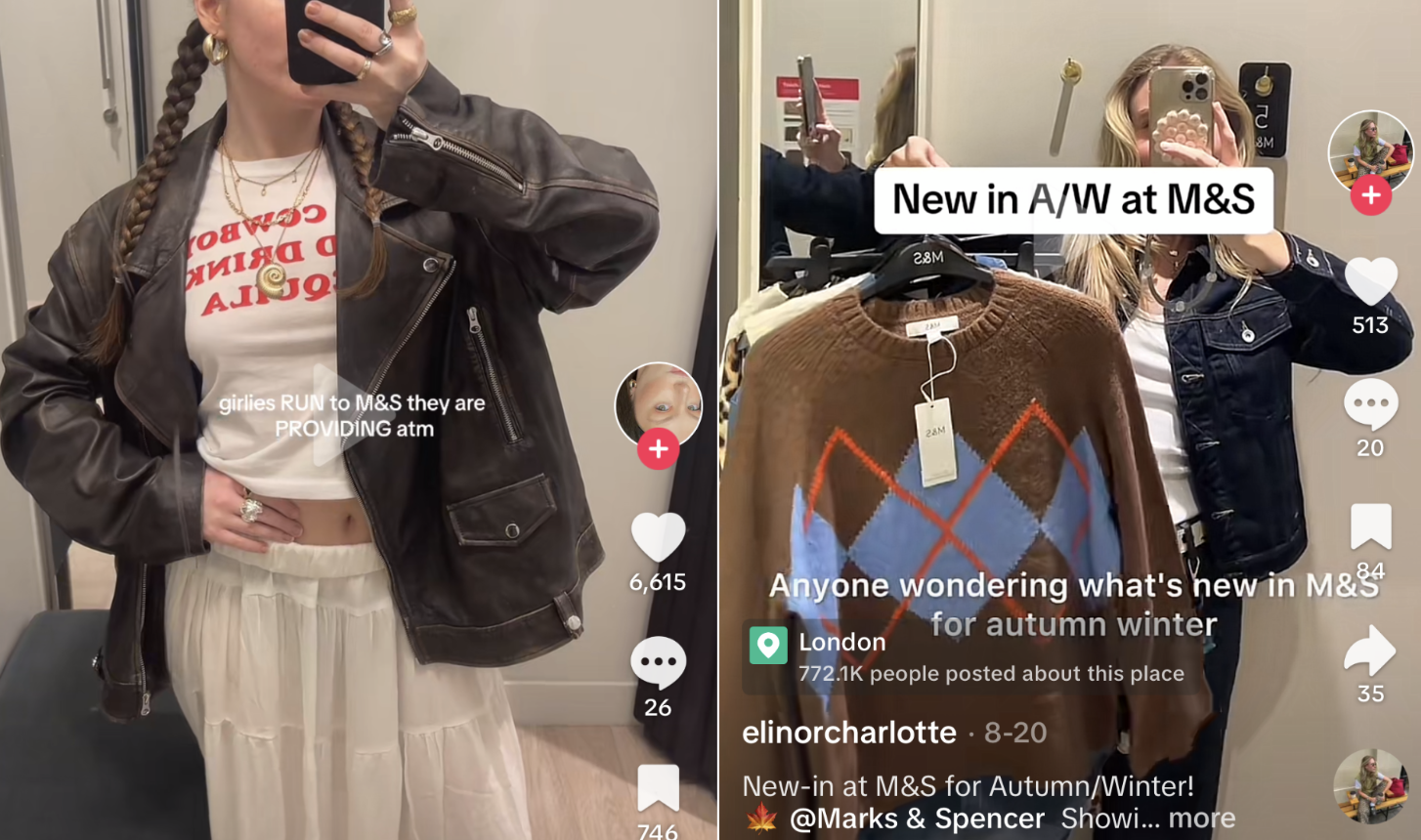
Balancing heritage and innovation: M&S's strategy balances its heritage as a trusted quality British retailer with innovation in sustainability and on-the-pulse fashion. This approach helps retain loyal customers while attracting new ones.
M&S's strategy succeeds by addressing several key market trends simultaneously. By focusing on sustainability, appealing to younger audiences, and leveraging social media and UGC, M&S is repositioning itself as a modern, responsible retailer while maintaining its core values and existing customer base.
Conclusion
As we've seen from these diverse examples, a successful go-to-market strategy is about more than just having a great product or service. It's about understanding your market, knowing your audience, and creating a plan that resonates with them on multiple levels.
From Lick Paint's emphasis on customer education to Canva's user-centric approach, and from Modibodi's myth-busting campaigns to TALA's focus on sustainability, each of these brands has found unique ways to connect with their target customers and stand out in crowded markets.
Key takeaways for a successful go-to-market strategy include:
- Know your audience inside and out
- Align your strategy with your brand values
- Use multiple channels to reach and engage customers
- Leverage user-generated content and community-building
- Continuously innovate and adapt based on customer feedback
As you develop your own go-to-market strategy, take inspiration from these examples, but don't forget to inject your own brand's unique personality and values.
With careful planning, creativity, and a willingness to adapt, you can create a strategy that not only launches your product successfully but also builds a strong foundation for long-term growth.
Are you ready to take your go-to-market strategy to the next level?
Grab your copy of our handy tried-and-tested go-to-market strategy template today!












